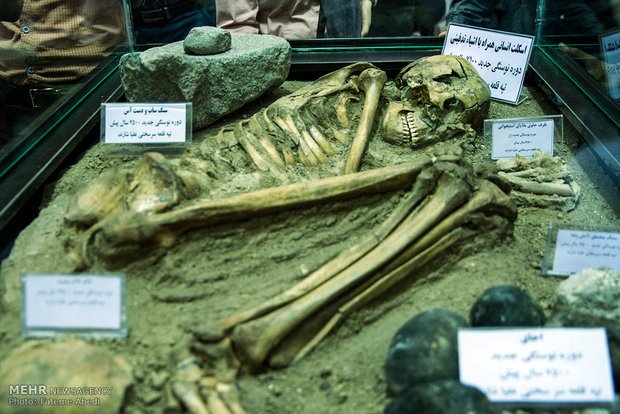The Chahar Fasl History Museum recently opened the showcase of the remains, whose discovery has been hailed as a turning point in the historiography of central Iran, demonstrating that the region has had human civilization for a period of at least 7,500 years.
View image on Twitter

Follow
 khabar parsi @khabarparsicom
khabar parsi @khabarparsicom????/ ??????? ?? ????? ???????? ??????? ?? ??? ?????? ????? - http://khabarparsi.com/%d9%81%db%8c%d9%84%d9%85-%d8%b1%d9%88%d9%86%d9%85%d8%a7%db%8c%db%8c-%d8%a7%d8%b2-%d8%a7%d8%b3%da%a9%d9%84%d8%aa-%db%b7%db%b5%db%b0%db%b0%d8%b3%d8%a7%d9%84%d9%87-%da%a9%d8%b4%d9%81%e2%80%8c%d8%b4/��
9:48 PM - 28 Sep 2016
The skeleton is displayed in the fetal position in which it was found. Archeologists believe that this was the traditional burial method in the Neolithic period. The remains are believed to have been preserved in such good condition due to low accitidy and high salt content in the soil around the burial area.
The remains were found during excavations near an ancient burial mound in Shazand, about 40 km southwest of Arak. In the course of their work, archeologists also discovered artifacts and monuments including pottery, stone and bone tools, as well as architectural fragments from the stone and copper ages.










